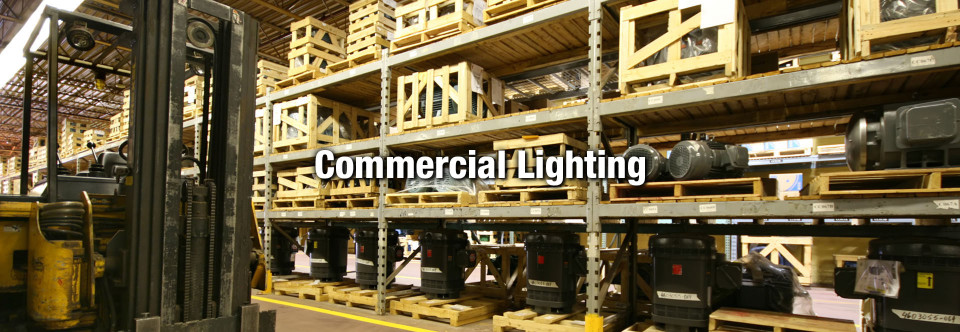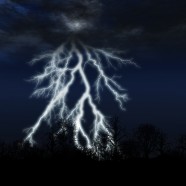"With 27 years in business serving the community of South Florida, Static Electric is your one-stop shop for all business and residential electrical contractor needs."
From new homes through remodeling and renovations, we’ll give you peace of mind that your installation is safe and fully compliant with building codes. In commerce and industry, we’ll ensure the safe and efficient functioning of your business’s electrical operations, help you save money and avoid costly downtimes.
What Does a Lightning Rod Do?
Invented by Benjamin Franklin, lightning rods have been a controversial subject for hundreds of years. Unlike the popular view of them, a lightning rod doesn’t attract lightning to a building. Instead, they simply provide a safe way for electrical energy to reach the ground and avoid damaging a building. The state of Florida offers more lightning strikes per square mile than any other state in the country, so the danger of lightning damage is constant, every day of the year. Preventing damage from a lightning strike by installing a lightning rod system is just smart business.
The Way a Lightning Rod Works
Lightning rods don’t attract lightning, nor do they create it or draw it down from the sky. Lightning will strike in any area it wants, despite anything happening on the ground. When it strikes, lightning can be seen to jump around, moving sideways to find the path of least resistance to the ground. Often the path is a tree, flagpole, house, or other tall object. Whatever is the closest object that will lead low resistance to the ground, that’s where the lightning will strike. When a lightning storm is in the area, there is always a possibility that your business might get hit. With a lightning rod system installed, that hit will conduct the electricity to the ground instead of spreading the energy over your roof and building, causing heat damage or fire.
A Professional Lightning Rod System
A lightning rod is actually a very simple system, and one that can be integrated into your commercial building during construction, or retrofitted afterward. It consists of a terminal, that sits on top of a building, along with a wire that leads from the terminal to the ground, and a buried ground pad where the lightning will eventually end. Air terminals today can be as simple as 18-inch rods not much thicker than a pencil, or even a decorative finial set on the roof and integrated into the safety design. A licensed electrical contractor will be able to inspect a commercial building and advise the size of the lightning rod system that should be installed. A building may need one or many terminals, depending on the size and height of the building, as well as its architectural design.
The Benefits of a Lightning Rod System
The obvious first benefit to having a commercial lightning rod system installed is diverting lightning away from a building and into the ground, avoiding electrical damage and fires. Beyond this, commercial electrical contractors advise installing a lightning rod system for other reasons:
- It can save lives. Dozens of people die from lightning strikes each year, and a surprising number of them are inside buildings when they are hit
- It can save your data. Even if you have no heat damage or fire, a lightning strike right to your building can wipe out your computer system, your POS system, and any other expensive electrical equipment you may run in your business, losing any data stored in their memory
- It can save money. Most insurance companies will offer discounts on a commercial insurance package if a lightning rod system is installed, especially in areas with a high incidence of lightning damage such as Florida
When to Get a Lightning Rod System Installed
A licensed commercial electrical contractor can install a lightning rod system at any stage in the construction process, including retrofitting one years after a building is completed. The best method is to incorporate the lightning rod system into the original electrical wiring design for the building. An integrated system can be more attractive, and can be more easily installed if done so during all the other electrical work in new construction. Your commercial contractor can also add a lightning rod safety system to your existing commercial building of any size. Lightning rods are appropriate for buildings of any height, not just skyscrapers and the tallest buildings in town. If you’ve ever seen photos of lightning striking the ground in the middle of a circle of trees, you know it will hit anywhere it wants. If it aims for your building, the smartest idea is to give it somewhere safe to go.
Read MoreReasons to Use a Licensed Commercial Electrical Service Contractor
Whether you’re renovating a restaurant or building an entire subdivision, hiring a commercial electrical contractor can save you both headaches and money. A licensed commercial electrical contractor will have the knowledge and experience to work with you throughout your entire project. He’ll help you to draw up plans that integrate the electrical system with the rest of the inside of the building, then work to install the wiring and appliances and make sure it’s all up to code. While it’s natural to think of a commercial electrical service when planning new construction, other occasions will occur when it’s natural to hire a licensed professional instead of a general contractor.
Renovation and Remodeling
Many cities in South Florida are enjoying a period of gentrification, going from run-down neighborhoods to upscale eateries and housing. The bones of these old buildings may be solid, but the wiring is likely to be unsafe and unusable. Only someone experienced in dealing with multiple wiring setups can inspect your situation and decide whether it can be repaired or needs to be replaced. In addition, most home remodeling projects call for electrical upgrades due to increased power needs for modern families, updated lighting inside and out, and an upgraded circuit breaker system to replace old fuse boxes.
Lightning Protection
From bars to hospitals, all commercial businesses are run on electricity every day of the year. Florida has more lightning strikes per square mile than any other state in the union, so protection from lightning strikes is crucial for your business. Your commercial electrical system should be connected to a lightning protection system consisting of an air terminal, which used to be called lightning rods, a grounding system, and an upgraded surge protection to make sure your equipment is safe even if lightning does hit your building. A commercial electrical contractor has the experience to create a system that’s unique to your business, retrofitting the equipment within your existing plan.
Standby Generators
Every business has electrical equipment that needs to be in use during the business day, from lights and POS systems in gift boutiques to emergency medical equipment in clinics and hospitals. In south Florida we have a unique combination of circumstances that face us each year, every one of which is likely to cut our power at any time. Lightning strikes, tropical storms, hurricanes, and even accidents with power lines can all create a power outage, leaving your business suddenly without its crucial equipment. A standby generator is the answer to this problem, and commercial electrical contractors can draw up a plan with you, depending on your emergency needs. Whether it’s keeping lights and air conditioning going in a retirement community or making sure an emergency room continues to function, the correct standby generator system can be integrated into the existing electrical system, making sure you’re still up and running when the power fails.
Maintenance and Service
Preventive care is always less expensive than emergency repair, and that applies to electrical systems as much as anything else. A commercial electrician has the training and knowledge to inspect your business and set up a maintenance plan to avoid most electrical problems before they start. He can inspect commercial electrical wiring on a regular basis, change light bulbs before they burn out, do regular maintenance on commercial machinery, and inspect the entire electrical system on every visit.
No matter how much maintenance your commercial electrician does, emergencies will sometimes happen or machinery will break down over time. Having a commercial electrical contractor on call can give you peace of mind, knowing he can repair your existing equipment. You lose money every minute your equipment is shut down, so hiring a commercial expert can save you money over time.
Read More4-Point Checklist for Critical Electrical Maintenance in Your Business
Electrical down times cost your business money, through higher repair bills and loss of business if you have to close. The best way to prevent most electrical system problems in your business is by creating and following an electrical maintenance service schedule.
Find a service professional who will walk through your business with you and find all the systems and equipment that need maintenance on a regular basis. From basic lighting to intricate machinery, your business’s electrical equipment will have fewer problems if you anticipate them and take care of the problems before they arise. Follow this 4-poimt electrical maintenance checklist to make sure you don’t overlook anything important:
#1: Generator Maintenance
The danger of a power outage in Florida is high in any given week, and much more so during the six months of the year that make up hurricane season. Lightning, tropical storms, hurricanes, and even traffic accidents can cause your business to lose power, and without power you’ll probably have to close your doors. Whether you need lights and air conditioning in an office or refrigeration to keep thousands of dollars of expensive food safe in a restaurant, it’s crucial that you keep the power running, no matter what happens outside.
Maintaining your backup generator should have the biggest priority on your service list, and your contractor will determine what maintenance will be needed, the lifespan of your generator’s parts, and how often the unit should be serviced.
#2: Lightning Protection Maintenance
Florida receives more lightning strikes per square mile than any other state in the country. This not only poses a danger to the power grids, it is also a threat to your business building itself. A solid lightning protection system can ensure that any lightning strikes that hit your building are directed away and into a grounded portion of the property, reducing or eliminating the chances of property damage from the storm. Like any other equipment, lightning protection has to be properly maintained:
- The physical parts of the system must be inspected on a regular basis, tightening fasteners and replacing worn parts, as needed.
- Surge protectors should be checked and tested regularly to make sure they’ll function properly when called upon.
It may seem like an inert system, but lightning protection should be an important part of your electrical maintenance schedule.
#3: Lighting System Electrical Maintenance
Changing a light bulb can seem like a simple task, but if you lose your light at a crucial part in your work day, you can lose a substantial amount of money, or worse. The correct lighting levels can make your clients happier, and will create a more productive work place, so keeping your lighting at optimum levels is a key part in maximizing your profits.The best way to ensure this is happening is to schedule regular lighting system maintenance with a professional contractor.
An experienced electrical professional will know how to replace older incandescent bulbs with newer, energy efficient LED lights. He’ll check and replace bulbs, inside and out, on a regular schedule. Wiring can become a problem, especially in older businesses, and inspection and repair will be an important part of your electrical maintenance schedule. Stopping problems before they start is the most cost-effective way of doing business, and keeping your power on is the best way to keep your business safe and open, without incurring expensive repair costs.
#4: Equipment Maintenance
Every piece of equipment in your business has a recommended maintenance procedure, from checking and maintaining gaskets to lubricating moving parts. A commercial electrical professional contractor will inspect all the equipment on your property and determine an efficient and effective schedule of electrical equipment maintenance tasks. Your equipment represents a major investment, and even those minor pieces that are only used on an occasional basis can cost a lot of money to repair.
Following the manufacturer’s recommended maintenance plan not only ensures the best possible chance that the equipment won’t break down, it will keep your machines within their warranty guidelines, possibly lowering or eliminating any repair or replacement costs. Besides, well-maintained electrical equipment helps you to realize the industrial energy savings you want.
Read MoreHow to Achieve Integrated Electrical Services in a South Florida Home or Business
Doing a comprehensive electrical job such as rewiring a building or renovating a business can involve multiple parts and services. All of these pieces need to fit together like a jigsaw puzzle for your project to work smoothly once it’s finished. A good electrical project manager has the knowledge and experience to plan your entire project and to supervise installation of each system and piece of equipment, making sure they work together as one unit. Your goal in renovating or building a new structure should be to achieve integrated electrical services, and a professional electrical manager will make this happen.
Residential Installation
A large residential project such as renovating an entire house requires a delicate balance between electrical loads, and knowledge of how current and projected future use will affect the system. For example:
- Homes built as little as 30 years ago are out of date, in terms of electrical usage;
- More wattage may be needed on the exterior of the home;
- Extra outlets may be needed for multiple kitchen appliances, and
- Constant computer usage adds to the power drain that needs to be planned for.
Your project manager will sit down with you to plan out your entire renovation or new house installation, discussing your lifestyle as well as future plans for the use of the house. Family growth, home office use, and even hobbies and passions can affect residential installation, and each part of the plan needs to work well with all the others. It’s smarter and more efficient to install wiring and appliances you’ll need in the future right away, rather than replacing them piecemeal years in the future.
Generators
Residents in south Florida live with a constant danger of lightning, tropical storms, and hurricanes knocking out power for days at a time. Savvy homeowners and those with businesses know that an installed generator is the best way to ensure a constant power source in case of an electrical emergency. Alternate power sources are the smart way to keep your family comfortable and safe, or to ensure your business is up and running when the power goes out. Electrical project managers know how to determine the size of generator you need for your home or business, as well as how to provide integrated electrical services by combining the generator’s ability with the rest of the systems you are installing.
Energy Efficient Appliances
Homes, restaurants, and even hospitals use appliances on a daily basis, and all can benefit from energy efficient appliances. The savings from installing official Energy Star approved appliances can be significant, and they can have a positive impact on the environment at the same time. The time to install these appliances is when you begin your project, when you and your project manager can coordinate their power usage and fit it in with the general installation plan. Your electrical professional can advise you on the size and style of appliances that fit most with your needs and lifestyle.
Building Codes
Every community has its own particular building codes, and community inspectors must certify that your plans are up to code before allowing your project to go forward. A certified electrical professional knows all about local ordinances, will adapt your plans to fit into existing codes, and will supervise all work to ensure standards don’t slip during the installation.
Project Management
The earlier you contact a professional project manager, the better and more smoothly your project will proceed. An electrical professional is your best ally in creating a coordinated whole-building electrical system. Rather than add or subtract portions of the electrical system piecemeal, he’ll oversee the big picture and set up integrated electrical services from outlets and lighting to circuits and wiring. He’ll ensure that all electrical systems work together, the circuits installed can carry the projected load of all installations, and the entire job is finished and operational in a timely manner.
Read MoreHow Replacing Light Ballasts Reduces a Business’s Electrical Consumption
 Studies show that at least 30 percent of most business’s electric bills are due to lighting. One of the simplest ways you can cut down on your electrical consumption is by replacing your fluorescent bulbs with new, more efficient versions and with the ballasts in the fixtures to go along with them.
Studies show that at least 30 percent of most business’s electric bills are due to lighting. One of the simplest ways you can cut down on your electrical consumption is by replacing your fluorescent bulbs with new, more efficient versions and with the ballasts in the fixtures to go along with them.
The Purpose of Light Ballasts
Light ballasts are devices to limit the current in an electrical circuit. In a fluorescent light, it limits the amount of current that goes through the tube, preventing it from burning out prematurely. Every fluorescent light fixture has a ballast of some type, but newer high efficiency models are designed to work with high performance bulbs that use much less power.
Advantages of New Ballasts
Replacing light ballasts in your place of business will save your company money, but it will also turn your business into a greener, more efficient workplace. Among the benefits are:
- Raising the efficiency of your lighting fixture
- Reducing energy loss
- Creating more light with less power
- Lowering your monthly energy bills
- Reducing residual heat
Types of Ballasts
Fluorescent ballasts come in two varieties, electromagnetic and electronic. If you’ve got older fixtures in your business, your lights may have electromagnetic ballasts installed. They use electromagnetic induction to start and operate the voltages in your light. There is a coil of wire inside these ballasts that combine with an electromagnetic field to transform voltage. These ballasts limit the flow of current to the light but don’t change the frequency of the input power. The bulb will light up on each half-cycle of the power source, which is what causes the signature flickering of most older fluorescent bulbs.
Electronic ballasts, on the other hand, use a solid-state circuit to transform voltage. Unlike the electromagnetic ballasts, they can also change the frequency of the power. This means that electronic ballasts can reduce or even completely eliminate the flickering in your fluorescent lamps. Because of their solid-state circuitry, as opposed to the electromagnetic ballasts’ magnetic coils, electronic ballasts are more efficient and will run cooler.
Financial Benefits
It may seem counterproductive, spending money to replace all the lighting ballasts in your business, just to save money, but they will end up paying for themselves in a surprisingly short amount of time.
- First of all, the reduced use of electricity lowers your monthly electric bill immediately. You’ll see a significant difference in the amount of power you use each month.
- Next, the light ballasts allow less power to flow through the bulbs, so you’ll need to change them much less often.
- Thirdly, the newer lighting system runs much cooler than old fashioned fluorescent lights, so you’ll save even more money by not having to use your air conditioning as much.
- Finally, the fact that you’re using green technology is a great selling point for customers and clients, and may cause an increase in business because of your ecologically-minded business practices.
Make changes today by replacing your light ballasts and reap all the benefits you can. For information and advice or an estimate to fulfill your electrical requirements, contact Static Electric for a free consultation.
Read More5 Steps to Achieving Industrial Energy Savings
Industry uses about one third of all the energy consumed in this country, but most companies don’t have a comprehensive policy for saving energy. It takes a combination of the best technology upgrades and best practice efficiency for your company to show its best reduction in use, but with careful strategy and implementation you can find ways to achieve positive results.
#1: Look for Financial Incentives
Doing an energy upgrade to your business may be a daunting proposition, but there are many financial incentives that can take the sting out of an otherwise pricey project. Commercial and governmental agencies have all given great weight to industrial energy savings, and are rewarding business owners who comply with new standards. Depending on your industry, you may find:
- Loans, rebates, or grants to help cover the cost of any retrofitting or installation of new equipment or supplies
- Income tax deductions for business owners or businesses for following stricter energy use standards
- Reduced sales tax or tax exemptions on certain energy-efficient products
- State government or utility company financial incentives
#2: Review Your Energy Plan
The first step in reducing your industry’s energy use is to develop a comprehensive reduction plan. Get a professional electrical contractor to inspect your physical plant as well as observing your day-to-day operations. New habits and best practices can result in significant savings, just like more efficient equipment can, and an expert will be able to advise you on all aspects of this. Retain a professional commercial designer to develop and lay out a comprehensive plan that show you, step-by-step, just how it will save energy for your business.
#3: Upgrade Your Equipment
The largest investment in your business is doubtless the equipment, and you need to be sure that you have the best, most efficient models of each type in use. Assess each item of equipment to determine whether it’s efficient enough, or if it’s using more energy than a newer model would. The larger the piece of equipment, the more energy savings you can find in most cases. If necessary, obtain expert advice on equipment such as boilers, wiring and circuit breakers, coolers and chillers, internal emergency power sources, and lighting fixtures. Investigate whether it’s possible to renovate your existing equipment for better energy efficiency, and find out what’s involved in specialized installations of any new items.
#4: Change Up the Lighting
Lighting is one of the simplest changes a business can make, and yet it can make a significant difference in industrial energy savings. In some companies electrical lighting accounts for up to 40 percent of the total electrical usage. Change out all your fluorescent and incandescent light bulbs and replace them with more energy efficient LED bulbs. They’re brighter, they use a fraction of the energy as traditional bulbs, and they last years or decades instead of just months.
#5: Invest in Energy Star Certified Equipment
More and more, companies and individuals are making business decisions based on environmental factors as well as economical ones. The Environmental Protection Agency has an Energy Starcertification program for industrial plants. If your company falls within their performance levels, you’ll be eligible to display the Energy Star logo and advertise as a certified green industry. With all the interest in green living and the environment, this certification can be a large factor in business decisions, and an edge you’ll have over your competitors.
Contact us for help developing a comprehensive industrial energy savings program from strategy through to final inspection.
Read MoreWhat Generator Size Do I Need in South Florida?
Here in south Florida, hurricanes, tropical storms, and wild thunder and lightning are common occurrences. Along with putting away the lawn furniture and tying the tree limbs, we’ve also got to be ready for the inevitable loss of power that happens multiple times a year. Some power outages are short term situations, only lasting an hour or two. But with the worst of storms, the power can stay off for days at a time while workers try to get the infrastructure back in shape.
If the storm is bad enough, you may opt for taking yourself and your family out of the area, closing up your house in the meantime. But if you plan to stay, or if you’re taking unawares, you may be stuck for a long time with no electricity to run your appliances. This can cause a real problem, and end up costing you a lot of money for lost food, along with the inconvenience and uncomfortable living. This is where a generator begins to make sense.
Your Minimum Needs
You may never think about everything in your life that electricity powers until you lose it. It would not be cost-effective to get a generator that can run everything in your household, but there are a few items that are crucial to keep going.
- Refrigerator
- Several lights
- Sump pump
- Microwave
- Television
What Size Generator Do I Need?
The size of your generator completely depends on how much power you want, and what you feel is the minimum for living during a power outage. If you can get by on just the bare basics, a smaller model will do. If your life won’t be complete without a computer and central air conditioning, you’ll need a more serious machine.
A small portable machine of 3,000 to 4,000 watts will run the basics on an average house. This includes the absolute bare minimum to get by during an outage.
A mid-sized portable machine with 5,000 to 8,500, can make your life a little easier. It can add a computer, a portable heater, a second sump pump, or more lights to the mix.
Move up to a large portable of around 10,000 watts and you’ll be able to run a small water heater, air conditioning, and an electric stove.
The largest generators available for home use are permanent installations of 10,000 to 15,000 watts. As long as they have fuel in them, they will basically run your entire house without a break in your service, just as if the rest of the neighborhood weren’t out of power.
How to Choose
The size of generator you need depends on quite a few factors. Do you have elderly people, infants, or those who are ill living in your home? You may need to keep the air conditioning on no matter what, requiring a more powerful piece of equipment. Is your family filled with rugged individualists and small children who will think camping out in the living room is an adventure? The smallest possible generator that just powers the refrigerator to keep your food safe might do the job.
Money is also something to consider, as each type of generator costs more than the smaller version before it. Don’t make money the only issue, though, since you may get a discount on your insurance if you have a generator, plus you’ll save money by not losing pounds of food during an outage.
Finally, before you think about installing a permanent generator, speak with an electrical contractor to find out how much home rewiring you’ll need to install. It may be a simple job, or you entire home may need to be redone for some of the more powerful systems. It’s a compromise between what you want and what you absolutely need, but getting some type of generator in south Florida is always a good idea.
Read More











Recent Comments